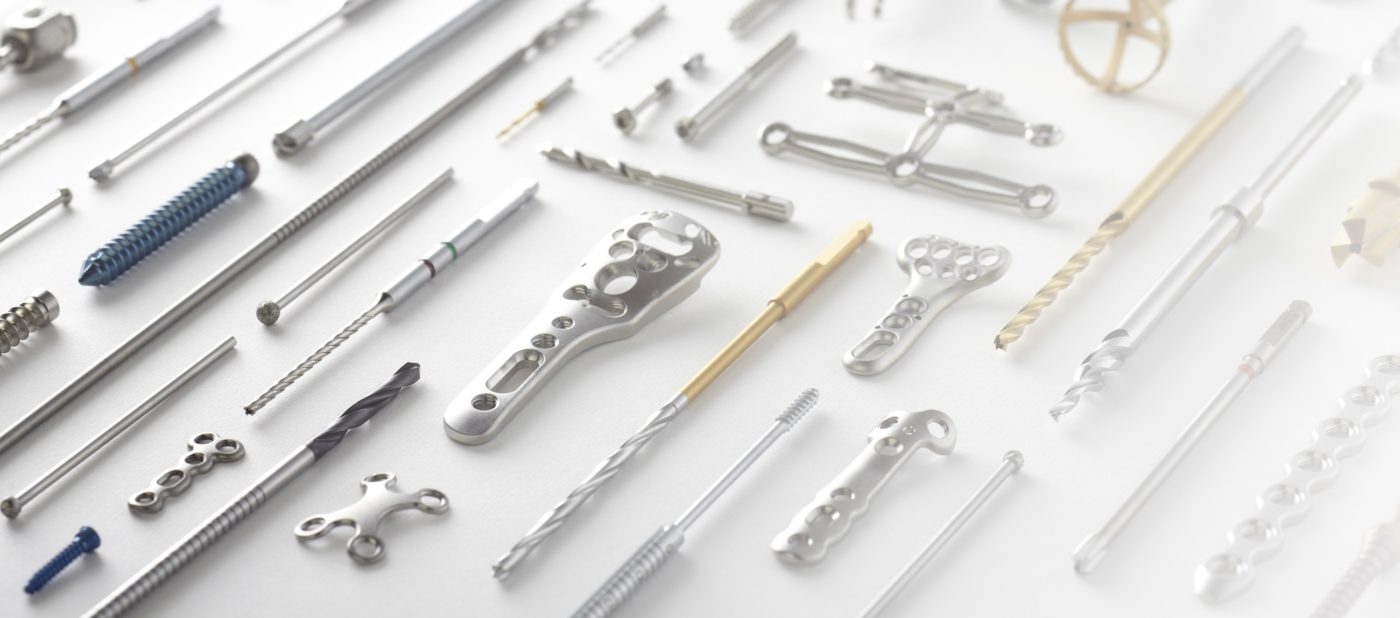A screw is a cylindrical mechanical device with threads along its body. Screws have been introduced in orthopaedic treatments since 1912 when William O Sherman published his recommendations of using bone screws to heal bones. Before we get into the types of bone screws in existence, let us first go through the basic usage and structure of bone screws.
The primary function of a bone screw is to produce compression in bones which is required to mend a bone injury. A screw converts all the forces that arise out of bone movement into compression and distributes this compression evenly throughout the surface of injured bones. It is due to this compression that a bone stays in place and heals faster. Screws can help in attaching implants to bones or anchorage or in fixation of soft tissue.
The structure of an orthopaedic screw is just like a normal screw, consisting of a head and the body. Let us see different parameters related to orthopaedic bone screws.
- Head: A head of a screw is the top flattened surface of a screw which is mainly used to insert the screw.
- Length: The length of a screw is measured as the length from head to the tip.
- Diameter: There are two types of diameters. Outside diameter is the total thickness of a screw from one horizontal end of a thread to the other. Inner diameter is the thickness of a screw sans the threads. In order to insert a screw, the pilot hole must be the size of the inner diameter.
- Pitch: A pitch of the screw is defined as the distance travelled by a screw with each 360º turn.
- Tip: The end opposite to the head is the tip of a screw.
Now, the types of orthopaedic bone screws in use today depend on several factors.
Area of Application:
Screws can be named after the type of bones in which they are inserted. These are mainly two types:
- Cortical bones:Cortical bones are the denser outer layers of bones which are primarily meant for protection of internal cavity. And about 80% of body mass is made up of these bones. Cortex screws have smaller pitch as compared to cancellous screws, meaning there are more number of threads on a cortex screw. The ratio of the inner diameter to outer diameter is less. These screws are basically designed to have greater purchase inside cortical bones. A cortex screw is fully threaded.
- Cancellous bones: Cancellous bones are also known as spongy bones, and as we can judge by the name, are a bit softer than the cortex bones. These bones are found at the tips of other bones, e.g. ribs, skull, pelvic bones, etc. A cancellous screw is longer as compared to cortex screw, and has a larger pitch. The threads are deep and the ratio of inner diameter to outer diameter is high. A cancellous screw can be fully or partially threaded.
Material:
Depending upon the material used to make a screw, there are three types:
- Stainless Steel: Stainless Steel screws are the most common. For cortex bones, they range from 1.5 to 4.5mm. For cancellous bones, they range from 3.5 to 6.5mm.
- Titanium:Titanium screws are ideal for treating mandibular fractures. The rate of infection in titanium is less as compared to stainless steel.
- Bio-absorbable:Bio-absorbable screws are mostly made up of polylactic acid, polyglycolic acid and poly-L-lcatic acid. There is no need to remove them afterwards, as they are absorbed by the body. But they also stimulate foreign body reaction in some cases.
- Threaded:Screws with threaded heads are beneficial in case when a screw is to be locked to an implant. The construct using threaded-head screws is more stable.
- Hexagonal:Screws with hexagonal heads are the most common. They provide great attachment for screwdriver to insert the screw.
- Crossed:These heads are normally present in smaller screws, to be used in phalangeal and metacarpal surgeries.
- Non-tapping:The tips are smooth and round. They are inserted making a pilot hole and tapping.
- Self-tapping:These screws have cutting flutes so that they can tap themselves once a pilot hole has been made.
- Self-drilling:These screws can be inserted as they are, no preparations are needed. They can create the pilot hole and they’re self-tapping too.
Uteshiya Medicare is an Orthopedic& Trauma implants manufacturers & Suppliers Company approved by FDA and ISO 13485:2003. The unmatched leadership of company directors and their sound technical experience helps Uteshiya Medicare to deliver the best to the needed.


